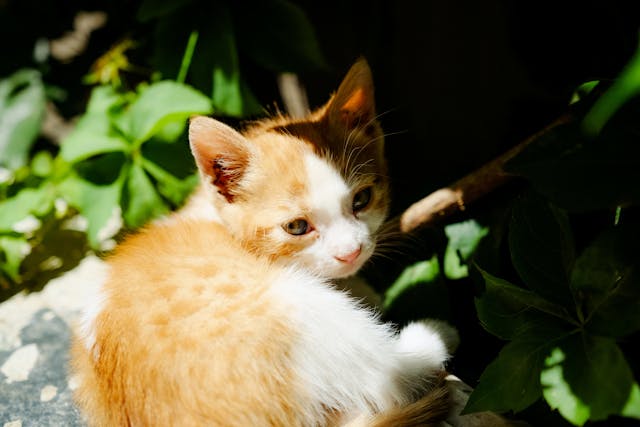Paws for Thought: Understanding and Addressing Feline Obesity
In the realm of feline health, obesity looms as a silent yet significant adversary, casting a shadow over the lives of our beloved furry companions. As guardians of these majestic creatures, it’s our responsibility to recognize the signs, understand the implications, and take proactive measures to combat this pervasive issue.
The Weighty Issue:
In a world where sedentary lifestyles and plentiful treats abound, obesity has emerged as a common concern among cats. Contrary to popular belief, a rotund physique is not merely a cosmetic concern; it poses serious threats to your cat’s health and well-being.

Understanding the Risks:
Obesity in cats can lead to a myriad of health complications, including but not limited to:
- Diabetes Mellitus: Excess weight increases the risk of developing diabetes mellitus, a chronic condition that requires diligent management and can significantly impact your cat’s quality of life.
- Joint Problems: Carrying excess weight puts undue strain on your cat’s joints, increasing the likelihood of arthritis and mobility issues.
- Heart Disease: Obesity is closely linked to heart disease in cats, placing additional strain on the cardiovascular system and diminishing overall heart health.
- Decreased Life Expectancy: Studies have shown that obese cats tend to have shorter lifespans compared to their lean counterparts, highlighting the profound impact of excess weight on longevity.
Identifying Obesity:
How can you tell if your cat is tipping the scales towards obesity? Here are some telltale signs to watch out for:
- Visible Weight Gain: An obvious increase in body mass, particularly around the abdomen and chest areas.
- Difficulty Grooming: Cats may struggle to groom themselves effectively due to limited mobility and flexibility.
- Lethargy: A lack of energy and enthusiasm for play or physical activity.
- Labored Breathing: Obesity can compromise respiratory function, leading to wheezing or labored breathing, especially after exertion.

Taking Action:
The journey towards a healthier, happier feline companion begins with a commitment to proactive intervention:
- Balanced Diet: Consult with your veterinarian to develop a nutritionally balanced diet tailored to your cat’s age, weight, and activity level. Opt for high-quality, portion-controlled meals to prevent overfeeding.
- Regular Exercise: Encourage physical activity through interactive play sessions, enrichment activities, and access to stimulating environments. Invest in toys that promote movement and engagement.
- Weight Management Plan: Work closely with your veterinarian to establish realistic weight loss goals and monitor progress over time. Implement gradual changes to your cat’s diet and lifestyle to avoid undue stress or discomfort.
- Routine Veterinary Check-ups: Schedule regular wellness exams to assess your cat’s overall health and address any underlying medical concerns that may contribute to weight gain.
- Consistent Support: Show patience, compassion, and unwavering support as you embark on this journey towards optimal health and vitality. Celebrate small victories and remain steadfast in your commitment to your cat’s well-being.

Conclusion:
In the grand tapestry of feline health, obesity stands as a formidable obstacle, yet it is not insurmountable. With vigilance, education, and a steadfast dedication to holistic care, we can empower our feline companions to lead fulfilling lives free from the burdens of excess weight. Let us embark on this journey together, one pawprint at a time, towards a brighter, healthier future for our beloved cats.


